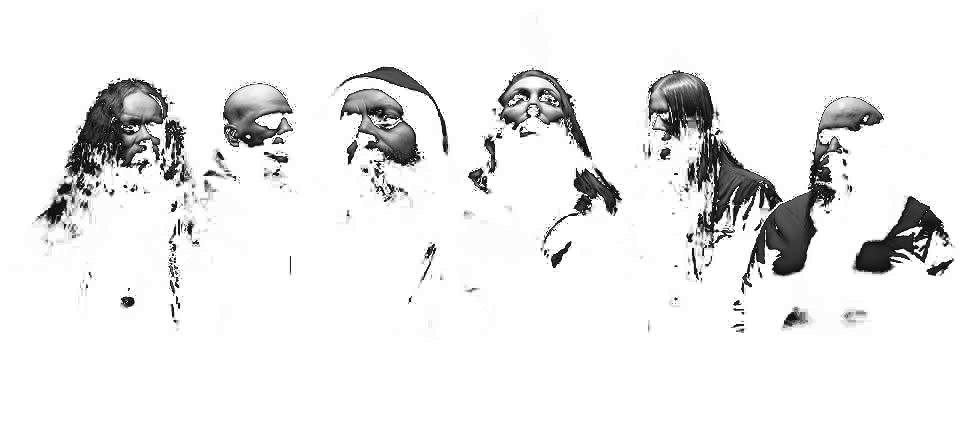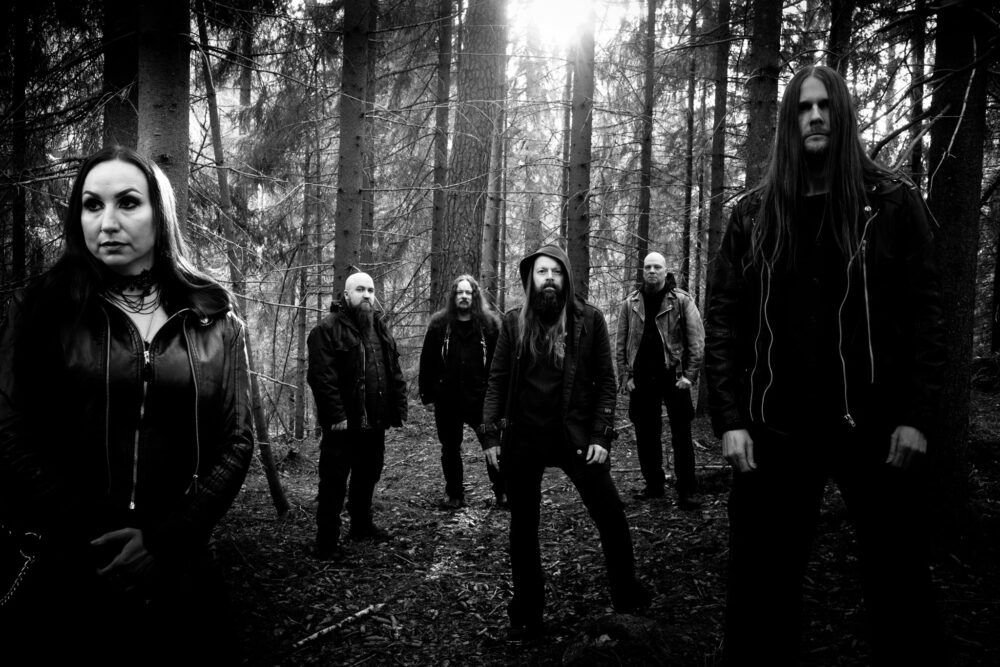Funeral doom is not entirely about grief and sorrow. It is true that this style revolves around sadness, but at its best it is about renewal, about passing through the dark part of the soul and stepping into something beyond.
Few might have expected Shape of Despair to make such a powerful return with their fourth album. Eleven years after their last release, on Monotony Fields Jarno Salomaa and the other members of the band present us with a truly classic funeral doom record. After releasing two excellent albums and one fairly good one between 2000 and 2004, the band chose silence. During that time they only appeared briefly, with a compilation in 2005, an EP in 2010, and finally a split with Before the Rain in 2011, before falling into a long sleep.
I have always been drawn to Shape of Despair’s particular approach to funeral doom, but what strikes me most here is their unusual use of the 3/4 time signature, something very rare in this style. The final sound is not exactly what the notation would suggest, yet the result is a fascinating ambiguity in the rhythm, a kind of swing or waltz-like feel that gives an entirely different mood from the more standard 4/4. It is an unusual choice, but it works well.
It is surprising that the album almost entirely abandons the traditional reliance on 4/4. At first this creative shift did not seem like a good idea, as if Shape of Despair had stepped too far away from what made them distinctive. Yet as I listened more, this mattered less, because the quality of the songwriting is consistently high.
In terms of composition, Monotony Fields shows maturity and a fully developed sense of craft. It proves that the long absence was not wasted. The band works with extended, meticulous arrangements that hide careful detail in the songwriting. These are not technically complex pieces, but there is a true artistry in their layers, allowing them to create songs that are substantial and meaningful, often stretching over ten minutes. Across the eight tracks, Shape of Despair delivers exactly that.
What has always set them apart from other Finnish bands is their preference for grand orchestral touches over a darker death metal foundation. That remains true here, but the execution this time feels more powerful than on their earlier albums.
The track Reaching the Innermost is a strong example of their ability to convey grief in a compelling stylistic way. Most of the songs move with a solemn pace. The synthesizers are used with skill and precision, and Natalie Koskinen’s operatic voice makes its impact exactly where it should. Those who dislike repetition may not enjoy much of the album, but for me this repetition adds an extra dimension and a fresh perspective to the music.
Instrumentally, the songs are not complex. Most tracks move forward on a simple drum beat, low-tuned guitar, and synthesizer, all staying in a single key. The guitar playing is simple, yet the riffs and chords are powerful and lead the music exactly where it needs to go. The drumming is also simple but well executed, with careful recording that gives the hits more warmth and weight. This is not an album driven by instruments, but by vocals. Henri Koivula delivers deep growls and well-placed clean singing where it is needed, allowing the music space to breathe. While the synthesizers weave throughout and the operatic vocals strike emotional blows, these serve to enhance rather than dominate, forming the backbone of the album’s atmosphere of sorrow.
Although the songs share a similar general structure, there are differences. The first half of Reaching the Innermost is almost ambient, the title track feels like a lament, and Withdrawn is among the darker and more depressive pieces. The Distant Dream of Life is distinct for being the shortest and possibly fastest song on the album, reminiscent of something by Draconian, and it works as a well-timed break in the record.
Eleven years away inevitably brings change, and here the most obvious is the greater use of clean vocals. This is handled professionally, without weakening the album or saturating it unnecessarily. One of the finest examples of clean vocals comes in Descending Inner Night. Another change is the reduced use of violin, which I see as a drawback for a band that uses it so well, although Natalie’s voice fills that gap effectively.
It can be said with confidence that Monotony Fields is Shape of Despair’s most purely funeral doom album to date. It is also a strong and deep return, while many other bands in the genre remain focused mainly on depression and sorrow. This makes it a major record, one that could easily be counted among the five best releases of 2015. It is not a perfect album, but it is a worthy comeback, and thankfully it will not be the last time we hear the dark voice of this band.
Originally published on by Lamentus

